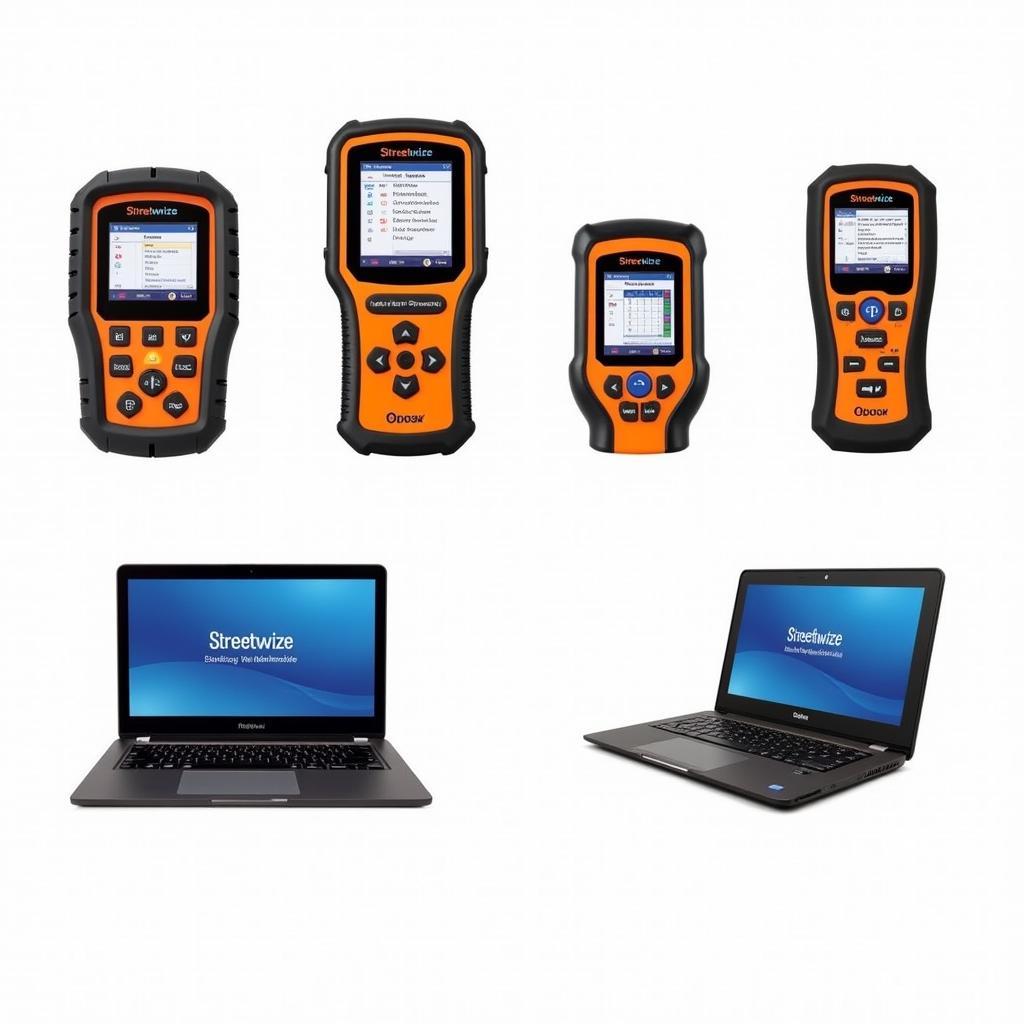A Tpms Sensor Diagnostic Tool is an essential device for any car owner or mechanic dealing with tire pressure monitoring systems. These systems, now standard on all new vehicles, alert drivers to potentially dangerous low tire pressure situations. A TPMS sensor diagnostic tool helps you quickly diagnose and fix issues with these sensors, ensuring your car remains safe and fuel-efficient.
Why is a TPMS Sensor Diagnostic Tool Important?
You might be thinking, “Can’t I just check my tire pressure with a regular gauge?” While a standard gauge can tell you if your tire needs air, it doesn’t provide information about the TPMS sensor itself. A TPMS sensor diagnostic tool goes beyond basic pressure readings.
Here’s why this tool is crucial:
- Accurate Diagnostics: It reads the sensor’s unique ID, battery life, pressure reading, and temperature data, allowing for precise identification of faulty sensors.
- Faster Repairs: By pinpointing the exact problem sensor, you avoid wasting time checking each tire manually.
- Programming Capabilities: Many advanced tools can program new sensors, eliminating the need for a costly trip to the dealership.
- Enhanced Safety: Driving with a malfunctioning TPMS can be risky, as you might not be alerted to low tire pressure.
- Improved Fuel Efficiency: Properly inflated tires maximize fuel economy, saving you money in the long run.
Types of TPMS Sensor Diagnostic Tools
There are several types of TPMS diagnostic tools available, each with varying functionalities and price points:
1. Basic TPMS Activation Tools
These entry-level tools are the most affordable. They function by sending a signal that triggers the sensor to transmit its data, which is then displayed on the tool’s screen.
Best for: Car owners who want a simple tool to check sensor functionality and battery life.
2. OBD2 TPMS Diagnostic Tools
These tools connect to your car’s OBD2 port and communicate directly with the vehicle’s onboard computer. This allows them to read and clear TPMS fault codes, as well as program new sensors on some vehicle models.
Best for: DIY enthusiasts and mechanics who want more advanced diagnostic capabilities and programming options.
3. Professional-Grade TPMS Tools
These high-end tools offer the most comprehensive functionality, including sensor activation, programming, ECU communication, and advanced diagnostic features. They often come with extensive vehicle coverage and regular software updates.
Best for: Professional mechanics and tire shops that require the most advanced features and broad vehicle compatibility.
How to Choose the Right TPMS Sensor Diagnostic Tool
Selecting the right TPMS tool depends on your individual needs and budget. Consider the following factors:
- Frequency of Use: If you only need it for occasional checks, a basic activation tool might suffice.
- Vehicle Compatibility: Ensure the tool supports your car make and model, especially if you need programming capabilities.
- Features: Determine the level of functionality you require, such as code reading, programming, and advanced diagnostics.
- User Friendliness: Choose a tool with a clear display, intuitive interface, and easy-to-understand instructions.
- Budget: Set a budget and explore the options within your price range.
“Investing in a quality TPMS sensor diagnostic tool is essential for maintaining optimal vehicle safety and performance,” says John Miller, a senior automotive engineer with over 20 years of experience. “The right tool will save you time, money, and potential headaches in the long run.”
Common TPMS Sensor Issues and How to Diagnose Them
Understanding common TPMS issues can help you address problems effectively:
- Dead Battery: TPMS sensors have internal batteries with a lifespan of 5-10 years. A dead battery requires sensor replacement.
- Sensor Damage: Physical damage from impacts, punctures, or corrosion can render a sensor inoperable.
- Signal Interference: Electromagnetic interference from other devices can disrupt communication between the sensor and the vehicle’s computer.
- Programming Errors: Incorrectly programmed sensors can lead to false warnings or system malfunctions.
A TPMS diagnostic tool can help you identify these issues by:
- Checking Battery Life: The tool will indicate the sensor’s battery status.
- Reading Sensor Data: Examining the pressure and temperature readings can reveal sensor malfunction.
- Scanning for Fault Codes: The tool can retrieve and display stored fault codes, providing insights into the issue’s nature.
Maintaining Your TPMS System
To ensure your TPMS system functions correctly, follow these maintenance tips:
- Check Tire Pressure Regularly: Inspect your tire pressure at least once a month and before long trips.
- Have Sensors Checked During Tire Service: When getting new tires or tire rotations, ask your mechanic to inspect the TPMS sensors.
- Replace Sensors When Necessary: Don’t ignore TPMS warnings. If a sensor is faulty, have it replaced promptly.
Conclusion
A TPMS sensor diagnostic tool is a valuable investment for car owners and mechanics alike. By providing accurate diagnostics, simplifying repairs, and enabling sensor programming, these tools empower you to maintain optimal tire pressure, enhance vehicle safety, and improve fuel efficiency. Choose the tool that best suits your needs and budget, and enjoy peace of mind knowing you have the power to address TPMS issues effectively.
Need help selecting the right TPMS sensor diagnostic tool or have questions about your vehicle’s TPMS system? Contact the experts at ScanToolUS at +1 (641) 206-8880 or visit our office at 1615 S Laramie Ave, Cicero, IL 60804, USA. We’re here to help!


